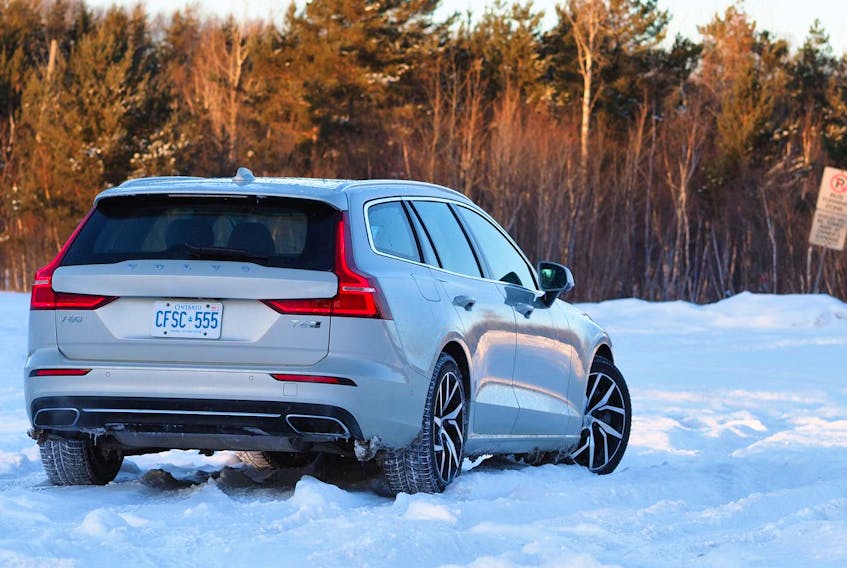Like us humans, vehicles benefit nicely from an occasional bath. That’s especially true in winter where many vulnerable parts of our rides are exposed to a corrosive and abrasive spray of salt, sand and water that gets into everything.
This leads to a buildup of sand and other debris in the various nooks and crannies in and under the car or truck in question. Eventually, these little piles of sand trap the corrosive salt and water mixture against parts of the steel body and structure of your ride, leading to accelerated formation of rust.
Hopefully, whatever you’re driving (especially on the East Coast) is properly undercoated to help prevent it from turning in to sheet-metal swiss cheese. Even still, a regular spray-down of the body and underside is a great idea throughout the winter.
Perhaps, most importantly, some strategic deployment of a high-pressure jet of water will clean those sand piles, and the salt within, from much of your vehicle, helping to keep corrosion at bay.
The other day, just as a mighty cold snap rolled into Northern Ont., I took the week’s tester (a Volvo V60 station wagon) to the local pressure wash to clean it, ahead of a weekend photo shoot. I beat the plummeting mercury by an hour, but the water from the car wash froze to the vehicle nonetheless, which made me think of a few hopefully-helpful steps you can take to prevent possibly frustrating problems after a mid-winter car wash.
Wiper squirters
The moment you’re done washing your vehicle, be sure to flood your front and rear windows (if applicable) with washer fluid for a few moments. Assuming you’re using a high-quality de-icing fluid (I prefer the yellow Rain-X stuff), this will help keep your wiper arm hinges, and more importantly, the washer fluid jets, from freezing up.
Be generous, using the fluid for 10 seconds or more, until you’re satisfied that any trace of fresh water on the wiper arms, or in the squirter nozzles, has been washed away. This will quickly prevent frozen wiper hinges which can impede wiper performance, and more importantly, ensures that your washer jets will be 100 per cent functional on your next drive.
Bring a towel
Bring an old towel and, before things freeze, use it to wipe any water off of the door seals, trunk or tailgate seals, your fuel-filler door and any other exterior part of your vehicle that can open or close. Not only does this help ensure your doors and fuel-filler door don’t freeze shut, but it can save wear and tear on the pricey-to-replace rubber weather seals over time. A quick walk around and wipe can go a long way to prevent frustration down the line.
Now’s a great time to use an old rag and wipe a thin layer of an appropriate lubricant over the rubber seals, too, to help prevent future freezing.
Windows
Inevitably, you’ll give your vehicle a winter bath, enter the Tim Hortons drive-thru the following morning, and find out that your windows are frozen shut and that you’ve got to open your door to order your double-double, like a sucker.
Simple solution though: just open each window a half inch, for a few minutes after your car wash. This considerably reduces the amount of ice allowed to form between your windows and their seals. Let the water freeze, and after a few minutes, roll the windows back up. This breaks the (reduced) icy seal and will see your windows working perfectly thereafter.
Aim carefully
When washing your vehicle at the coin wash, a few areas are worthy of additional attention from a stream of water.
First, the windshield cowl, which is where your windshield meets the hood and typically where the wipers park. Use the high-pressure water to blast out any ice or snow accumulated here and to ensure that the intake vent for the climate control system is totally clear of any buildup. Snow and ice can block this important air intake, dramatically reducing the effectiveness of your heater and defroster.
Second, fully rinse the interior of each wheel well, to entirety. In many vehicles, this is a common rust spot due to the shape of the inner edge of the wheel well and its tendency to trap salt and sand. Focus on blasting this area with fresh water until it runs clear.
Finally, get down low, stick the wash wand beneath your ride’s floor and aim upwards. Move the wand slowly along the underside of the vehicle to flush out as much sand and salt as you can from the undercarriage.
Remember, your car will be dirty after a few minutes of driving on winter roads and a winter car wash is less about appearance and more about eliminating built-up sand and salt. Your vehicle’s bodywork will thank you.









